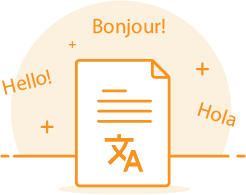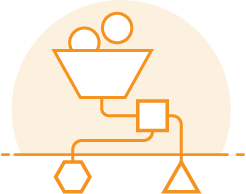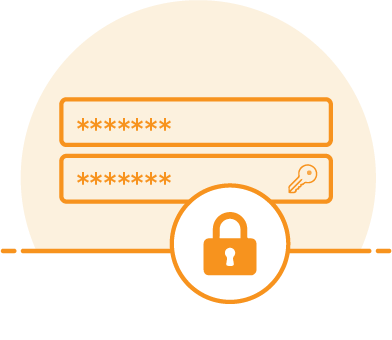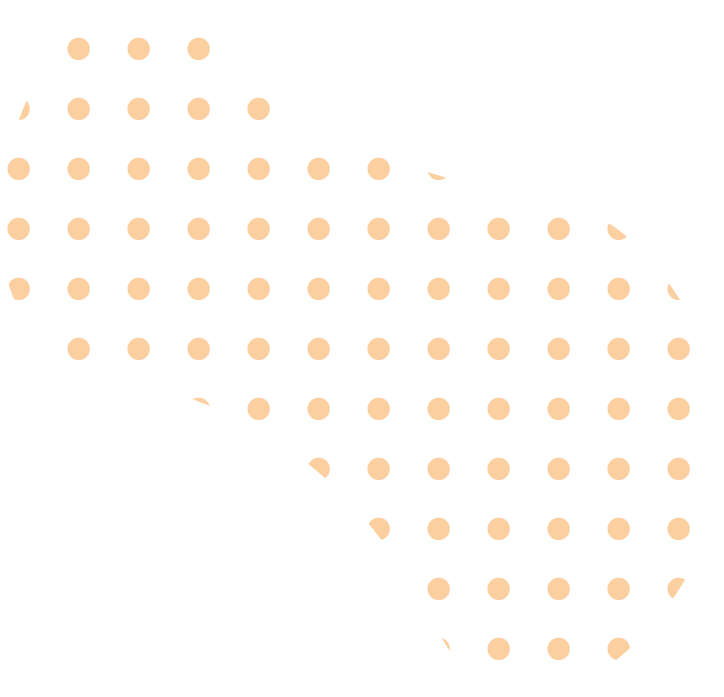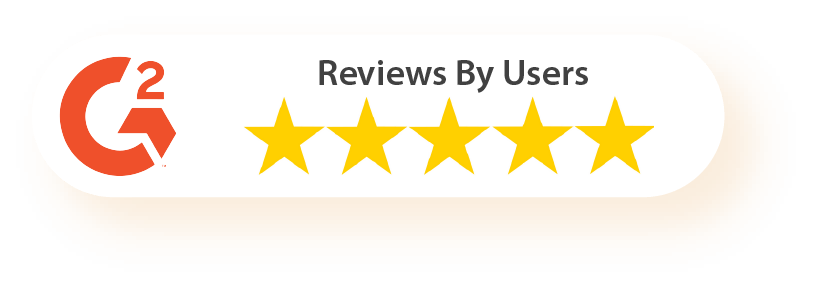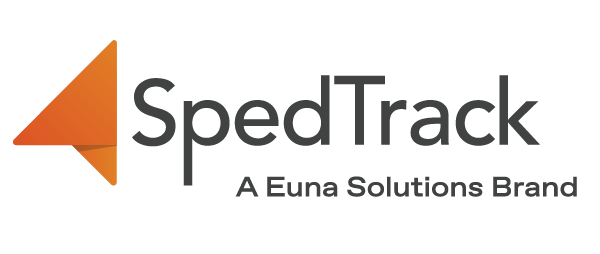What is RTI?
Response to Intervention (RTI) is a systematic approach to support students’ academic performance. In this FAQ, the US Department of Education explains RTI as the following:
“Response to intervention (RTI) strategies are tools that enable educators to target instructional interventions to children’s areas of specific need as soon as those needs become apparent…”
U.S. Department of Education
Schools that implement the Response to Intervention method monitor student progress by collecting specific data throughout the school year using benchmark assessments to determine students’ current levels of educational functioning in both reading and math. The data collected provides teachers with a better understanding of student success.
Data is used to identify struggling learners and help teachers create small groups that are flexible and tailored to intensive interventions. This instruction is not more of the same core curriculum, but research-based interventions. Small groups exist within this multi-tiered model and are attributed to three different Tiers of instruction. The three Tiers are often depicted as a pyramid built with three segments.

Response to intervention (RTI) is not required to only focus on academic success but can be coupled with behavioral supports to create a Multi-Tiered System of Support (MTSS). While this blog is strictly focused on the RTI Model; you can consult my other blog to learn more about how academic and behavioral success is uniquely linked and the structures schools can put into practice to support the whole learner.
RTI data is not only valuable for instructional purposes, it can also be instrumental in the referral of struggling students for a special education evaluation as described by IDEA. Ideally, this information can help a multidisciplinary team identify students with specific learning disabilities.
Cracking the Code of this Multi-tiered Model
As mentioned above, RTI is broken down into 3 separate tiers that are targeted for different levels of intervention. The tiers sequentially grow in intervention strategies, beginning with tier 1 as the least invasive option.
Tier 1: Core Curriculum Instruction
Tier 1 of the RTI model consists of a school’s core curriculum. The RTI method also implies that Tier 1 consists of whole class high-quality instruction, evidence-based practices, and differentiation to reach every learner. The RTI Action Network states that 75 – 80% of learners should continue progressing by actively engaging with the core curriculum in their regular classroom.
Data is collected through the use of benchmark assessments and universal screening to determine student levels of learning and progress. This data is likely reviewed by school administrators and academic coaches to gauge the effectiveness of their core curriculum and its implementation.
Examples of Tier 1 Academic Instruction
English Language Arts (ELA) curricula can be used in Tier 1 intervention to help build foundational language skills by introducing them to different genres of literature, teaching them about grammar concepts, and giving them practice with reading comprehension strategies. Some examples of ELA curricula that can be used in the classroom for this level of instruction may include:
Math is another piece of school’s core curriculum that is included in Tier 1 intervention. This can help students develop basic math skills such as numbers, shapes and operations, addition, subtraction, multiplication, division, and more. Examples of math curricula include:
Tier 1 instruction is generally associated with core academic competency, but can also be applied to other models like social-emotional learning curricula or strategies. Some examples of this may include:
- Positive Behavior Interventions & Supports (PBIS)
- The Behavioral Intervention Support Team Model (BIST)
- Conscience Discipline
You can also take steps toward providing social-emotional strategies by implementing more basic interventions within your classroom. The following are examples of actions you can take day-to-day in your classroom to improve your student support system:
- Effective classroom management strategies
- Visual Schedules
- Line basics
- Clear and simple instructions
- Restorative justice techniques
Tier 2: Tailored Instruction
As with Tier 1, data drives the early identification of struggling students. Data is regularly analyzed and used to create small student groups tailored to specific skills. If a student is not as responsive to Tier 1 instruction, they may require Tier 2 interventions. Tier 2 of the RTI model is specifically designed to provide learners with additional resources to acquire grade-level skills.
Tier 2 interventions are generally provided in small groups but may include individual lessons. Instruction is focused on missing skills identified through benchmark assessments or universal screening. These assessments often come with a purchased curriculum; however, they may be stand-alone assessments aligned with a school’s curriculum or state assessments.
Examples of Tier 2 Academic Instruction:
- Reteaching key concepts or ideas in new/different ways
- Specific interventions provided by curricular resources
- Intervention from an academic specialist
Similar to the structure of Tier 1, Tier 2 can be applied to behavioral support models as well. It is common for students to require both behavior and academic support. Some of the behavioral supports that you can provide at Tier 2 intervention level include:
- First/then charts (i.e., first you will have circle time, then you will work on addition with your teacher)
- Triage at specified times with an adult
- Personalized visual schedule
Tier 3: Intensive Instruction
When Tier 2 interventions are ineffective for a student based on their progress monitoring data, they may be moved to Tier 3 instruction.
Tier 3 is the most intensive instruction a student will receive before a special education referral. Tier 3 instruction will generally consist of one-on-one instruction or a very small group (2-3 students). The students will be assessed more frequently than at previous Tiers to ensure continued progress.
Tier 3 should also be the most data-informed level of instruction also, especially since data has been kept since Tier 1 and Tier 2 interventions. Tier 3 interventions are even more fine-tuned to the student’s needs. This indicates that students receive instruction using intensive interventions to teach the missing skills identified through formative and summative assessments. Progress monitoring data should be kept at least weekly if not more frequently.
This intensive intervention is provided by specialists or highly skilled teachers. Additionally, these instructors are using new tools that meet students at their level with the intention of moving them back down the RTI continuum.
When struggling students do not make sufficient progress, a special education referral should be considered.
Reading Response to Intervention Example
Stanley is a 3rd grade student at a local elementary school; however, he is new to the district. A universal screening was provided to all students at the beginning of the school year to create flexible tailored groups for each student. When the assessment results come back, they show that Stanley is struggling with reading and more specifically with identifying sounds by segmenting multisyllabic words. This skill is identified as below grade level and is not included in Tier 1 instruction.
His teacher quickly identifies other students who have similar learning challenges and creates small groups, Tier 2, designed to tackle these challenges through a response to intervention system that incorporates progress monitoring on a bi-weekly basis. Through progress monitoring, Stanley’s teacher can keep him moving at a brisk pace through their chosen intervention program. The teacher’s diligence and Stanley’s hard work allow him to master the missing skills and discontinue the Tier 2 intervention group.
Math Response to Intervention Example
Jenny is a second-grade student whose understanding of numeracy lags behind her same-aged peers. She was identified early on in the year as having struggles with the idea of place values. She has been working through the core curriculum but struggles to understand that in double-digit numbers there are tens and ones. Furthermore, Jenny has not demonstrated mastery of number bonds. Her regular classroom teachers have been implementing RTI just as many schools would have, but their instruction has not made the impact that was expected.
As a result, Jenny was moved to a Tier 3 small group with a numeracy coach. The coach did an even deeper dive into Jenny’s numeracy struggle by giving her a highly specialized screener. Based on those results Jenny met with the coach for one-on-one instruction. Even using these evidence-based practices and providing Jenny individual attention was not making the appropriate amount of growth that her teachers and parents had expected.
At this point, the local educational agency determined that a special education referral was warranted. The fact that the school had collected so much data through its multi-tier approach, made it simple to complete the evaluation process for Jenny. The speed at which the district was able to act during the special education evaluation process, given so much data was collected, helped to provide special education services sooner to Jenny who needed it most.
The Importance of Data Collection
In the two examples provided above, data was the key indicator of a student needing to move back into Tier 1 instruction, and a student needing a special education referral. Data is what makes the difference in highly structured RTI models. Data is also important to the Local Educational Agency because that means fewer barriers to completing an evaluation. With the necessary data collected before special education is warranted, fewer standardized tests are needed, and teachers have the ability to focus on a student as an individual. It also allows services to start sooner when there are fewer tasks to complete to meet special education evaluation compliance standards.
Simplify Your Special Education Process with SpedTrack, Powered by Euna Solutions™
SpedTrack was created with one thing in mind, simplifying special education. Special educators are overwhelmed in their processes of tracking IEPs, student progress, services provided, and more. That’s why we have created a fully functional solution that allows you to manage your process in one centralized location.
SpedTrack is here to meet your needs, whether that’s creating IEP goals, generating progress reports, or documenting services. Request a demo today to learn more about how we can increase your compliance and save you time!







